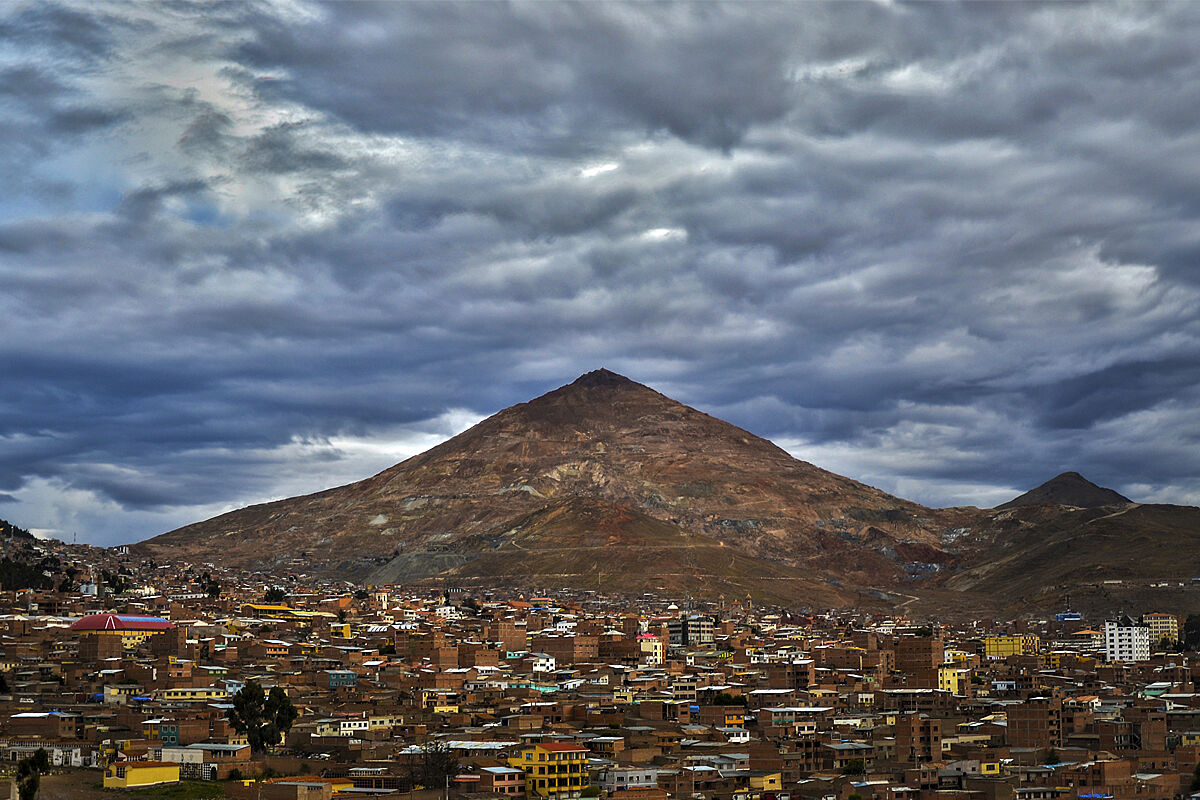RIO DE JANEIRO, BRAZIL – The Bolivian government has presented a project to preserve the heritage site Cerro Rico de Potosí, which was the largest silver deposit in the world in the 16th century, but for years has been suffering landslides that endanger its striking conical shape, due to persistent mining exploitation of the site.
The plan was presented to local authorities and citizen leaders of the Andean region of Potosí by the Minister of Mining and Metallurgy, Ramiro Villavicencio Guzmán, together with the Vice Minister of Mining Policy, Wiston Medrano, and the president of the state-owned Corporación Minera de Bolivia (Comibol), Eugenio Mendoza.

“In this project, what we want to do, and it is important, is not to damage the morphology of the hill,” said Villavicencio, quoted in a statement released Friday by his office.
The authority pointed out that a “world-class” solution to the Cerro Rico problem is being sought and mentioned as an example of the Chilean Chuquicamata mine, which since 2019 has been operating underground.
According to the minister, in Potosí, it is possible to have “a similar project” with an investment of “up to 20 million dollars” to provide an “almost definitive solution to this problem in Potosí”.
The Bolivian city of Potosí, where the hill is located, was inscribed as a World Heritage Site in 1987. Still, in 2014 it entered the List of World Heritage in Danger due to “uncontrolled” mining activity that could “degrade the site,” Unesco reported at the time.
Landslides at the summit of Cerro Rico have been occurring for several years, which has affected the mountain’s traditional conical shape.
The summit is 4,702 meters above sea level, and its protection is a permanent demand of the Potosí population.
The hill’s silver deposits have been exploited since 1545 and were one of Spain’s main sources of income in colonial times. Exploitation is currently prohibited above 4,400 meters, but the law is not enforced.
Bolivian authorities have sought various alternatives in recent years to preserve the hill, with measures such as relocating miners working in the risk areas, and “dry filling” applied in some collapsed areas.
According to the press release, the government study proposes to carry out a five-by-five-meter section cut starting at the lowest part until connecting with level 17, to enable new areas for the miners currently operating in the non-permitted zones.
Vice-Minister Medrano pointed out the need to also have a plant for “acid water treatment” and to consider solid waste management in the new areas to be enabled.
Villavicencio indicated that the project seeks to ensure that Cerro Rico “continues to be a heritage site, but also continues to be productive and, above all, benefits all social actors”.

